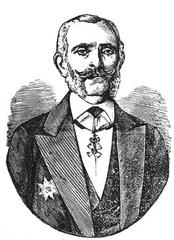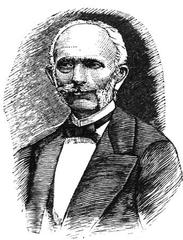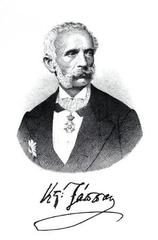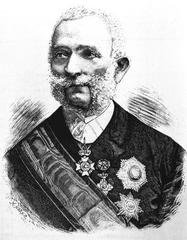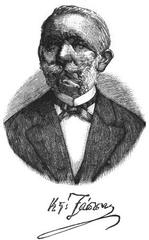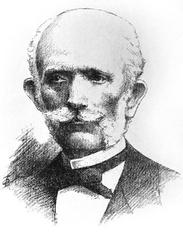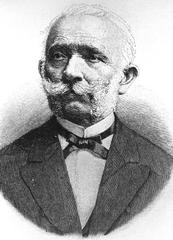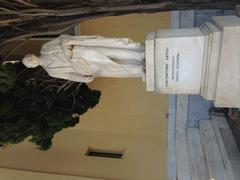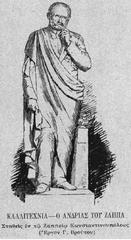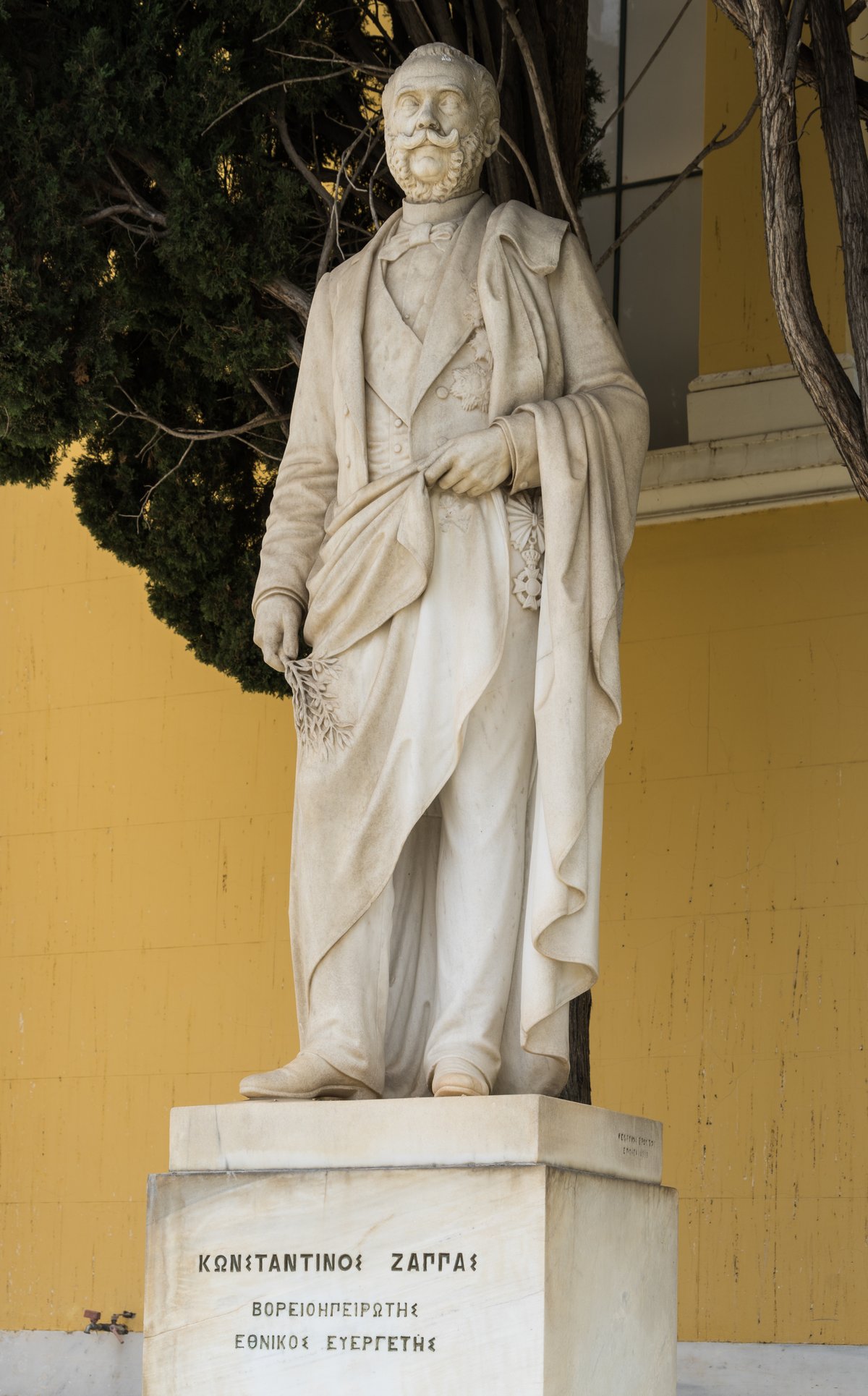
Visiting the Legacy of Konstantinos Zappas in Athens, Greece: Visiting Hours, Tickets, and Historical Significance
Date: 14/06/2025
Introduction
The Zappeion stands at the heart of Athens as a neoclassical marvel and a living testament to the philanthropic and national aspirations of Konstantinos Zappas. More than just an architectural gem, the Zappeion embodies Greece’s journey of national revival, cultural pride, and the rebirth of the Olympic Games. This guide offers a detailed exploration of the Zappeion’s historical context, practical visitor information, and the enduring impact of Konstantinos Zappas’s legacy, ensuring an enriching experience for anyone planning to discover this iconic monument.
(Atlas Obscura, HellenicaWorld, This is Athens)
Contents
- Early Life and Legacy of Konstantinos Zappas
- The Zappas Family and the Birth of Greek Nationalism
- The Zappas Olympics: Pioneering Modern Games
- The Zappeion: Architecture and Purpose
- Visiting the Zappeion: Hours, Tickets, Accessibility
- Guided Tours, Events, and Visitor Tips
- Nearby Attractions
- Educational and Philanthropic Initiatives
- Frequently Asked Questions (FAQ)
- Conclusion
- Sources and Further Reading
Early Life and Legacy of Konstantinos Zappas
Konstantinos Zappas (1813/1814–1892) was born in Labova e Madhe (Mega Lambovo), in the Ottoman Empire’s southern Balkans—an area marked by shifting borders and national aspirations. Of Greek or possibly Aromanian descent, Zappas grew up during the tumultuous era of the Greek War of Independence and the eventual formation of the modern Greek state. These formative years shaped his later dedication to Greek nationalist and philanthropic causes, especially in the spheres of education and culture.
The Zappas Family and the Birth of Greek Nationalism
The Zappas family—particularly cousins Evangelis and Konstantinos—became synonymous with the 19th-century Greek national revival. Evangelis Zappas, a veteran of the Greek War of Independence and a successful entrepreneur, envisioned the restoration of ancient Greek traditions to strengthen national identity. He initiated and funded the revival of the Olympic Games and left a large bequest to ensure their continuation. After Evangelis’s death in 1865, Konstantinos Zappas took up the mantle, executing his cousin’s will and overseeing the realization of their shared vision.
The Zappas Olympics: Pioneering Modern Games
Evangelis Zappas’s bequest financed a series of contests in Athens—known as the Zappas Olympics (1859, 1870, 1875, 1888)—that predated the International Olympic Committee’s Games. Konstantinos Zappas managed the trust, organized the events, and ensured the building of modern facilities such as the Zappeion and the restoration of the Panathenaic Stadium. The 1870 Zappas Olympics, held at the Panathenaic Stadium, drew over 30,000 spectators and participants from across the Greek world, reinforcing national unity and laying the groundwork for the 1896 Olympic Games.
(Olympics Library, Zappas.org)
The Zappeion: Architecture and Purpose
Neoclassical Splendor
Commissioned as the world’s first building specifically for Olympic purposes, the Zappeion was designed by Theophil Hansen in a grand neoclassical style. Its symmetrical façade, imposing Corinthian columns, and central open-sky atrium epitomize the architectural ideals of 19th-century Greece. The building comprises 25 rooms of varying sizes, including a spectacular central rotunda used for exhibitions and ceremonies.
Historical Roles
The Zappeion has served as the fencing venue for the 1896 Olympics, the Olympic Village in 1906, the Athens Radio Station, a hospital and barracks during World War II, and the media center for the 2004 Athens Games. It was also the site for Greece’s accession to the European Economic Community in 1979.
Visiting the Zappeion: Hours, Tickets, Accessibility
Visiting Hours
- Gardens: Open daily from 7:00 AM until dusk, free of charge.
- Zappeion Hall: Interior access is generally available during public events, exhibitions, or guided tours. Hours typically run from 9:00 AM to 5:00 PM (Monday–Friday), but can vary—check the official Zappeion website for updates.
Tickets
- Gardens and exterior: Free entry.
- Interior/exhibitions: Admission is usually free unless attending a ticketed event or special exhibition.
- Guided tours: Often free and available on select days; group or private tours may require advance booking.
Accessibility
The Zappeion and its gardens are wheelchair accessible, with paved paths, ramps, and accessible restrooms. For specific event accessibility, contact the venue in advance.
(This is Athens, Greek Reporter)
Guided Tours, Events, and Visitor Tips
- Guided Tours: Enrich your visit by joining a guided tour to learn about the Zappeion’s history, architecture, and symbolism. Tours often include the main atrium, exhibition halls, and gardens.
- Events: The Zappeion hosts art exhibitions, conferences, ceremonies, and public festivals. Check the events calendar for current programming.
- Photography: The neoclassical façade, central rotunda, and gardens offer excellent photo opportunities, especially in the morning or late afternoon light.
- Best Time to Visit: Spring and autumn offer pleasant weather and fewer crowds.
- Amenities: The grounds feature benches, a café, and a playground.
(Athens Happy Train, Greek Boston)
Nearby Attractions
- National Garden: Adjacent to the Zappeion, with shaded paths and diverse flora.
- Panathenaic Stadium: Restored with Zappas bequest funds, site of the first modern Olympics.
- Temple of Olympian Zeus: Ancient ruins visible from the Zappeion gardens.
- Syntagma Square & Parliament: A short walk north, ideal for combining into a single itinerary.
Educational and Philanthropic Initiatives
Konstantinos Zappas’s influence extended beyond athletics. He funded schools (especially for girls) in Constantinople, Labovë, and other regions, and established scholarships for postgraduate study in Western Europe, emphasizing agriculture and science. His vision helped advance Greek education and social development.
Frequently Asked Questions (FAQ)
Q: What are the Zappeion visiting hours?
A: The gardens are open daily from 7:00 AM until dusk. Interior access is typically available during public events or guided tours; check the official website for current details.
Q: Is there an entrance fee for the Zappeion?
A: Admission is generally free. Special exhibitions or events may require tickets.
Q: Are guided tours available?
A: Yes, guided tours are often offered on select days. Private or group tours may require advance booking.
Q: Is the Zappeion wheelchair accessible?
A: Yes, both the gardens and building have accessible paths and facilities.
Q: Can I combine a visit to the Zappeion with other attractions?
A: Absolutely. The Zappeion is centrally located near the National Garden, Panathenaic Stadium, and Temple of Olympian Zeus.
Conclusion
The Zappeion is more than a historic building; it is a living symbol of Greece’s revival, Olympic heritage, and philanthropic spirit. Exploring its halls, gardens, and monuments offers insights into the enduring impact of Konstantinos Zappas—whose vision shaped not only Athens, but the global Olympic movement. The site’s accessibility, free admission, and proximity to other major landmarks make it a must-visit for anyone interested in Greek history, culture, or architecture. Plan your visit by checking current hours and events, and consider a guided tour for a deeper appreciation of this remarkable site.
For more detailed guides, travel tips, and updates on Athens’ historical sites, explore related articles and download the Audiala app for personalized recommendations.
Sources and Further Reading
- Atlas Obscura – Zappeion
- HellenicaWorld – Konstantinos Zappas Biography
- Athens Happy Train – Zappeion Virtual Tour
- This is Athens – Zappeion Megaron Visitor Info
- Wikipedia – Zappeion
- Zappas.org – Zappas Legacy Timeline
- Panathenaic Stadium Official Site
- Athens by Locals – National Garden and Zappeion


